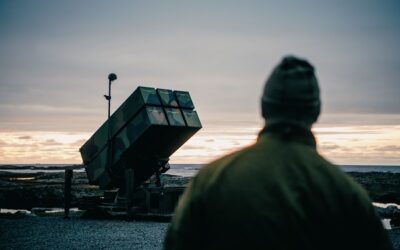Lockheed Martin to Deliver SSDS ACB 20 this Summer
In a media roundtable at Surface Navy Association (SNA 2020) attended by MON, Jim Sheridan, Vice President, Naval Combat and Missile Defense Systems at Lockheed Martin, provided the current roadmap for the US Navy (USN) Ship Self-Defense (SSDS) programme.
Lockheed Martin was confirmed as the Combat Systems Engineering Agent (CSEA) for SSDS last December. The system is a Combat Direction System that provides a defence capability against attacks by anti-ship missiles for nuclear-powered aircraft carriers (CVN) and amphibious (L-class) ships. Under this contract, Lockheed Martin will evolve the SSDS combat system, beginning with SSDS Build 12, injecting new capability upgrades and maintaining SSDS in-service baselines.
As the USN’s heritage AEGIS CSEA, Lockheed Martin has experience in successfully delivering integrated combat systems for the service’s DDG-51 and CG-47-classes, as well as for international navies. In a departure from this earlier work, however, Sheridan noted “there is a whole new heat and light that comes in a programme involved with an aircraft carrier.”
He also moved quickly to dispel one possible misperception under this new, wider programme thrust: “There are a lot of notions you may hear that we are putting AEGIS on aircraft carriers and amphibious ships. That is not the case. The L-class ships and aircraft carriers have very different systems than do AEGIS cruisers and AEGIS destroyers.” Of additional significance, the company is concurrently developing its Common Source Library (CSL), which enables efficient deployment of common software solutions across the surface navy, with variation techniques to customize for specific configurations. Through this approach, Lockheed Martin has delivered weapon systems to the Littoral Combat Ship fleet and the US Coast Guard that are derived from the USN’s AEGIS investment. “This will be the same way with SSDS – we’ll be able to take capabilities and build them into the Common Source Library for these SDSS-equipped ships and, where it makes sense, these capabilities will be accepted by the AEGIS-class platforms,” Sheridan observed.
Lockheed Martin’s work with SSDS is expected to integrate new capabilities into the service’s surface force, including Enterprise Air Surveillance Radars, SLQ-32 Surface Electronic Warfare Improvement Programme Block III, EVOLVED SEASPARROW Missile Block 2 and the Advanced Training Domain. The upgrade features cybersecurity enhancements and fire-control loop modernization.
Lockheed Martin’s first major delivery under this new contract, known in naval bureaucratic circles as SSDS Advanced Capability Build 20 (ACB 20), will be this summer to the USS GEORGE WASHINGTON (CVN 73), USS BOXER (LHD 4), USS SAN ANTONIO (LPD 17) and USS FORT LAUDERDALE (LPD 28). In addition, the SSDS ACB 10 will be migrated from Hardware Technology Insertion (HTI) 12 to HTI 16 infrastructure.
The selection of Lockheed Martin as CSEA for the SSDS makes the company the CSEA for aircraft carriers and most surface combatants, Sheridan noted, the major exception being the ZUMWALT-class guided-missile destroyers. The company plans to bid to become the CSEA for the new FFG(X) guided-missile frigate (https://monch.com/mpg/news/naval-channel/6597-sna-2020-us-navy-ff-g-x-programme-update.html) Lockheed Martin is adding the SSDS ACB 20 software to the CSL, also populated by its AEGIS Combat System software.
Marty Kauchak in Virginia for MON
























